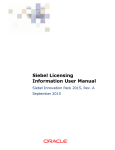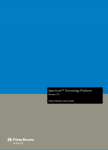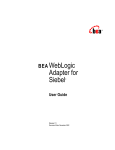Download Seibel CRM Integration Interface Version-11.0 9NT1316
Transcript
Seibel CRM Integration Interface Version-11.0 9NT1316-ORACLE FCUBSV.UM 11.0.0.0.0.0.0 [January] [2010] Oracle Part Number E51573-01 Document Control Author: Documentation Team Group: UBPG Created on: October 01, 2008 Revision No: Final Updated by: Documentation Team Reviewed by: Development/ Testing teams Approved by: Software Quality Assurance Team Updated on: January 04, 2010 Reviewed on: January 04, 2010 Approved on: January 04, 2010 Seibel CRM Integration Interface Table of Contents 1. ABOUT THIS MANUAL................................................................................................................................ 1-1 1.1 1.2 1.3 2. INTRODUCTION ........................................................................................................................................... 1-1 ACRONYMS AND ABBREVIATIONS .............................................................................................................. 1-1 GLOSSARY OF ICONS .................................................................................................................................. 1-1 ORACLE FLEXCUBE SIEBEL - CRM INTEGRATION.......................................................................... 2-1 2.1 INTRODUCTION ........................................................................................................................................... 2-1 2.2 ORACLE FLEXCUBE - SIEBEL CRM INTEGRATION .................................................................................. 2-1 2.2.1 Siebel Adapter.................................................................................................................................... 2-1 1-1 1. About this Manual 1.1 Introduction This manual outlines the requirements to support the integration of the Siebel FINS CRM product with Oracle FLEXCUBE. This manual provides you pertinent explanations about the various maintenances required for the smooth exchange of data between Oracle FLEXCUBE and a Siebel-CRM system. Besides this User Manual, while maintaining the interface related details, you can invoke the context sensitive help available for each field. This help encapsulates the purpose of each field within a screen. Placing the cursor on the relevant field and striking the <F1> key on the keyboard can obtain information specific to a particular field. 1.2 1.3 Acronyms and abbreviations FCUBS Oracle FLEXCUBE Universal Banking Software CRM Customer Relationship Management Glossary of Icons This User Manual may refer to all or some of the following icons. Icons Function New Copy Save Delete Unlock Print Close Re-open Reverse Template Roll-over Hold 1-1 Icons Function Authorize Liquidate Exit Sign-off Help Add Delete Refer the Procedures User Manual for further details about the icons. 1-2 2. Oracle FLEXCUBE Siebel - CRM Integration 2.1 Introduction Siebel CRM is an application through which information relating to a customer is captured. These could be from the creation of a customer profile to creating and operating various financial products available with your bank. These requests are captured in Siebel and sent to Oracle FLEXCUBE which is the backend processor for further processing. Broadly, there are two facets: • Request messages from Siebel to Oracle FLEXCUBE. This includes the following: ¾ ¾ ¾ ¾ ¾ ¾ ¾ ¾ ¾ • Handoff of product data from Oracle FLEXCUBE to Siebel. This includes the following: ¾ ¾ ¾ 2.2 Creation of a customer Modification of a customer Creation of a customer account Creation of a term deposit account Request for a term deposit rollover Request for an account statement Modification of a customer account address Creation of a new account address Providing a single customer view (SCV) Handoff of Account class details Handoff of Interest Rate code details Handoff of Consumer Lending product details Oracle FLEXCUBE - Siebel CRM Integration Siebel CRM is an application through which information pertaining to a customer can be captured. The information could relate to, say, creation of a customer to creating and operating various financial products available with your bank. These requests are captured in Siebel and sent to Oracle FLEXCUBE which is the backend product processor for further processing. The following points are noteworthy: • The message formats that are exchanged with Siebel are in its own Common Object Format. • The message format in which Oracle FLEXCUBE processes the messages is in FCUBSs published XML format. As there is a difference in the two formats, and also some possible differences in the values that the two systems operate on, a middle layer adapter is used which transforms and translates the formats between the two systems. 2.2.1 Siebel Adapter The FCUBS Inbound Interface Gateway provides a set of synchronous deployment patterns using which external systems can communicate with the Oracle FLEXCUBE backend. Siebel provides a common integration interface called the Common Objects (CO) which is XML based and through which it interfaces with any external system. Hence, all messages exchanged between Oracle FLEXCUBE and Siebel and vice-versa, are in an XML format that is published by Siebel in the Common Object format. 2-1 Since the formats of the message published by Oracle FLEXCUBE for all the operations are different from the Common Object format, a middle layer interface does the conversion between the two formats. This middle layer is called the adapter. There are two types of adapters: • An adapter for handling the incoming requests from Siebel and sending appropriate response messages • An adapter for handling the notification messages from FCUBS. A brief explanation about the two adapters is given below: 2.2.1.1 Incoming Adapter This adapter is a set of synchronous Webservices which is based on the WSLDs that are published for Oracle FLEXCUBE Siebel-CRM Integration. The functionality of the incoming adapter is to receive a request message from Siebel in the common object format and do the following: • Transform the message from the common object to the standard FCUBS format • Translate the values in the request XML which may be in common object format to FCUBS format • Call the appropriate FCUBS Web Service to perform the operation The Siebel in adapter is currently designed to handle the following operations. Siebel sends request messages corresponding to these Service and Operations: Description Service Name Operation Name Customer Creation FCUBSCustomerService CreateCust Customer Modification FCUBSCustomerService ModifyCust Savings Account Creation FCUBSCustomerAccountService CreateCustAcc Description Service Name Operation Name Term Deposit Creation FCUBSTDService CreateTDAcc Term Deposit Rollover FCUBSTDService ModifyTDRollover Account Address Modification FCUBSCustomerAccountAddress Service ModifyCustAccAd dr Account Statement Request FCUBSCustomerAccountFinancia lService RequestAccStmt Single Customer Summary View FCUBSSCVService QuerySCVCustSu mm Single Customer Detailed View FCUBSSCVService QuerySCVAccDet ails 2-2 Description Service Name Operation Name Single Customer Transaction View FCUBSSCVService QuerySCVTxnDet ails You need to refer to the document on message documentation for relevant information on the pertinent operations. 2.2.1.2 Siebel In Adapter Value Translation The values sent by Siebel in the Common Object format may be different from the one that Oracle FLEXCUBE expects. So, a value translation needs to done for some of the tags. There are two types of translations: • Setting Default value • Translating from one value to another The translation has to be maintained at an operation level. As an example, you can take CreateCust for a Customer creation request. You maintain such value translation details through the ‘Siebel Value Translation for Incoming Message’ screen. Here, you specify the following: Operation Name This is the FCUBS operation code. As an example, particular translation maintenance could be for a customer creation. So, you need to enter ‘CreateCust’ here. Tag Type This pertains to a group of related fields under a particular type. As an example, consider a tag type, say, ‘CcyType’ (currency type). You could be having a ‘Bought_Currency’ field and a ‘Sold_Currency’ field within a request message. Instead of maintaining translation details against each field, related fields are clubbed under a particular tag type. So, in our example, the ‘Bought_Currency’ and the ‘Sold_Currency’ fields can be clubbed under a tag named as ‘CcyType’. 2-3 Rule The rule governing a translation. You can choose one of the following: • Default • Translate Choosing the ‘Default’ option means that you need to specify the default value for a specific ‘Tag Type’. If you choose the ‘Translate’ option, you need to specify the external value and the internal value of a particular ‘Tag Type’. The external value pertains to the value coming from an external system and the internal value is the value to which this external value needs to be mapped to. Default Value If your chosen translation rule is ‘Default’, you need to specify the default value for a particular ‘Tag Type’. The ‘Ext Value’ and the ‘Int Value’ fields get disabled if you choose the translation rule as ‘Default’. Ext Val If your chosen translation rule is ‘Translate’, you need to specify the external value of a particular ‘Tag Type’. The external value pertains to the value coming from an external system. Here, the ‘Default Value’ field remains disabled. Int Val If your chosen translation rule is ‘Translate’, you need to specify the internal value of a particular ‘Tag Type’. The internal value pertains to the value to which an external value for a particular tag type needs to be mapped to. Here, the ‘Default Value’ field remains disabled. Note that if a translation maintenance has to be done for different operations, say for example customer creation, customer modification etc, then different maintenances need to be done separately. 2.2.1.3 Outgoing Adapter This adapter handles the notification messages generated by Oracle FLEXCUBE on certain events. The notification messages are put into the respective queues of the external system/adapter. These notifications are generated as per specific XML message formats, indicating that a particular event has happened in Oracle FLEXCUBE. Each of the notifications is uniquely identified by what is called a notification code which occurs in the notification message as one of the tags. 2-4 The Siebel out adapter is currently designed to handle the following notifications: Notification Code Service Operation Comment NOTIF_IC_UDEV ALS_NEW FCUBSAccClassService QueryAccount Class When new interest rate details are maintained, Oracle FLEXCUBE triggers this notification. In response, the adapter issues a query pertaining to the Account class. NOTIF_CA_ACCL ASS_MOD FCUBSAccClassService QueryAccount Class Any change in an Account class details triggers off this notification. In response, the adapter issues a query pertaining to the account class. NOTIF_CA_CUST ACC_STAT FCUBSAccService QueryCustAc c When the status of an account is changed, Oracle FLEXCUBE triggers this notification. In response, the adapter issues a query pertaining to the account details. NOTIF_CA_CUST ACC_NEW FCUBSAccService QueryCustAc c When a new account is created, Oracle FLEXCUBE triggers this notification. In response, the adapter issues a query pertaining to the account details. NOTIF_IC_CHG_ CLASS_NEW FCUBSAccClassService QueryAccount Class When a new charge class is maintained, Oracle FLEXCUBE triggers this notification. In response, the adapter issues a query on the account class. NOTIF_IC_CHG_ FCUBSAccClassService 2-5 QueryAccount When a charge class is modified, Oracle Notification Code Service CLASS_MOD Operation Comment Class FLEXCUBE triggers this notification. In response, the adapter issues a query on the account class. Notification Code Service Operation Comment NOTIF_CA_ACCL ASS_UDE FCUBSAccClassService QueryAccount Class When an account class UDE maintenance is modified, Oracle FLEXCUBE triggers this notification. In response, the adapter issues a query on the account class. NOTIF_IC_UDEV ALS_MOD FCUBSAccClassService QueryAccount Class When interest rate details are modified, Oracle FLEXCUBE triggers this notification. In response, the adapter issues a query on the account class. NOTIF_CL_PRO DUCT FCUBSCLProdService QueryCLProd uct When a new CL product is created, Oracle FLEXCUBE triggers this notification. In response, the adapter issues a query on the CL product. Each of the above notifications maps to a corresponding Oracle FLEXCUBE Service and Operation code. In case of Siebel, the above table gives the mapping. On receipt of any one of the above notifications, the adapter builds an XML query message corresponding to the service and operation to the response. The response message sent by Oracle FLEXCUBE is sent back to Siebel. You need to refer to the document on message documentation for relevant information on the pertinent operations. 2-6 2.2.1.4 Siebel Out Adapter Value Translation The values sent by Oracle FLEXCUBE in its own XML format and the corresponding values in an external system may be different. So, a value translation needs to done for some of the tags. There are two types of translation: • Setting Default value • Translating from one value to another The translation has to be maintained at an operation level. As an example, you can take CreateCust for a Customer creation request. You maintain such value translation details through the ‘Siebel Value Translation for Outgoing Message’ screen. The screen is shown below: Here, you specify the following: Operation Name Specify the relevant operation name. As an example, a particular translation maintenance could be for a customer creation. So, you need to enter ‘CreateCust’ here. Tag Type This pertains to a group of related fields under a particular type. As an example, consider a tag type, say, ‘CcyType’ (currency type). You could be having a ‘Bought_Currency’ field and a ‘Sold_Currency’ field within a request message. Instead of maintaining translation details against each field, related fields are clubbed under a particular tag type. So, in our example, the ‘Bought_Currency’ and the ‘Sold_Currency’ fields can be clubbed under a tag named as ‘CcyType’. Rule The rule governing a translation. You can choose one of the following: • Default • Translate Choosing the ‘Default’ option means that you need to specify the default value for a specific ‘Tag Type’. 2-7 If you choose the ‘Translate’ option, you need to specify the external value and the internal value of a particular ‘Tag Type’. The external value pertains to the value coming from Oracle FLEXCUBE and the internal value is the corresponding value in the Common Object format. Default Value If your chosen translation rule is ‘Default’, you need to specify the default value for a particular ‘Tag Type’. The ‘Ext Value’ and the ‘Int Value’ fields get disabled if you choose the translation rule as ‘Default’. Ext Val If your chosen translation rule is ‘Translate’, you need to specify the external value of a particular ‘Tag Type’. The external value pertains to the value coming from Oracle FLEXCUBE. Here, the ‘Default Value’ field remains disabled. Int Val If your chosen translation rule is ‘Translate’, you need to specify the internal value of a particular ‘Tag Type’. This internal value is the value of the corresponding ‘Tag Type’ in the Common Object format. Here, the ‘Default Value’ field remains disabled. Note that if a translation maintenance has to be done for different operations, say for example customer creation, customer modification etc, then different maintenances need to be done separately. 2-8 Seibel CRM Integration Interface [January] [2010] Version 11.0 Oracle Corporation World Headquarters 500 Oracle Parkway Redwood Shores, CA 94065 U.S.A. Worldwide Inquiries: Phone: +1.650.506.7000 Fax: +1.650.506.7200 www.oracle.com/ financial_services/ Copyright © [2010] Oracle Financial Services Software Limited. All rights reserved. No part of this work may be reproduced, stored in a retrieval system, adopted or transmitted in any form or by any means, electronic, mechanical, photographic, graphic, optic recording or otherwise, translated in any language or computer language, without the prior written permission of Oracle Financial Services Software Limited. Due care has been taken to make this document and accompanying software package as accurate as possible. However, Oracle Financial Services Software Limited makes no representation or warranties with respect to the contents hereof and shall not be responsible for any loss or damage caused to the user by the direct or indirect use of this document and the accompanying Software System. Furthermore, Oracle Financial Services Software Limited reserves the right to alter, modify or otherwise change in any manner the content hereof, without obligation of Oracle Financial Services Software Limited to notify any person of such revision or changes. All company and product names are trademarks of the respective companies with which they are associated.














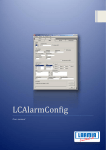
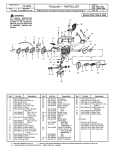
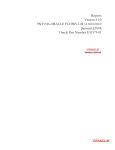
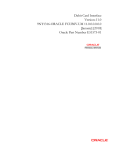
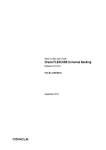
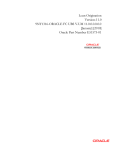
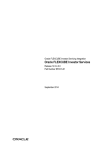
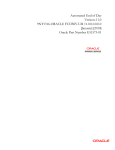


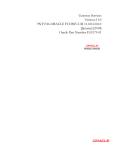
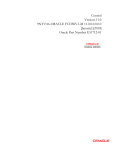
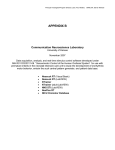

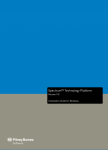
![[January] [2010] Oracle Part Number E51573-01](http://vs1.manualzilla.com/store/data/005949232_1-523acd1fdebcb19bbe7f8615d255a7d7-150x150.png)
